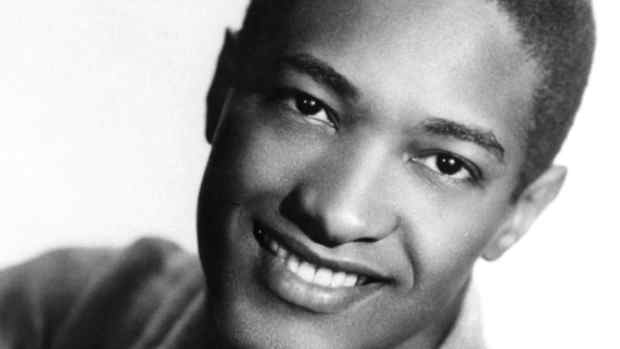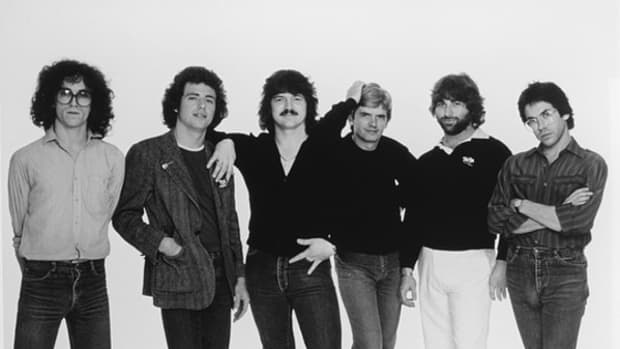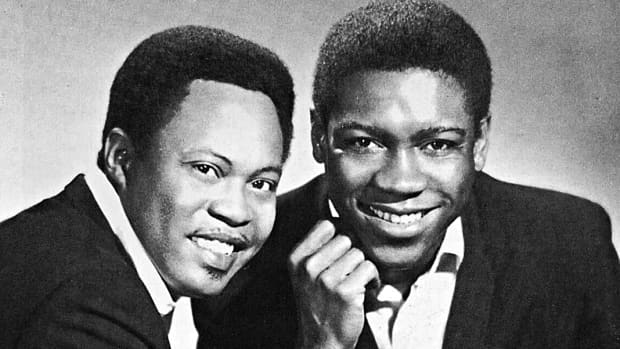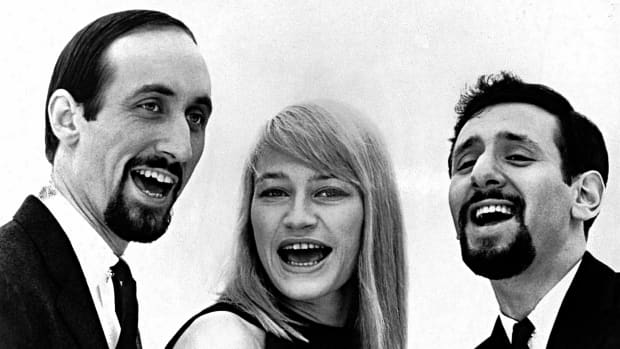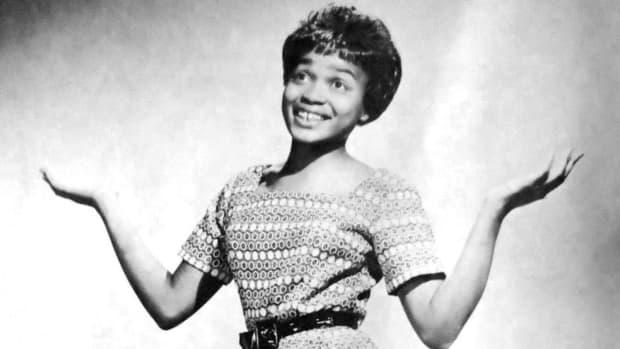The Story Behind the Song "Blame It on the Bossa Nova" by Eydie Gormé
"Blame It on the Bossa Nova" was released on January 4, 1963. With its poppy organ sound and simple lyrics, it was an AM radio staple and a big hit for Eydie Gormé. The song debuted in the Billboard Hot 100 the week of January 19, 1963, and remained there until the week of April 27th.
Who Was Eydie Gormé?
Edith Gormezano was born in 1928 to a Sicilian father and Turkish mother. Though comfortable with languages including Italian, Turkish and Spanish, young Eydie loved to sing more than anything else. She worked as a translator at the United Nations for a time, but in her heart she wanted to be on stage.
Eydie got her start as a backup singer with a number of big bands in the New York area, but her real break came when she auditioned for a spot on The Tonight Show with Steve Allen in 1953.
Meeting Steve Lawrence
It was there she met her partner and future husband Steve Lawrence. Eydie and Steve stayed with the Tonight Show until 1957, and the popular duo even had their own short-lived tv show The Steve Lawrence-Eydie Gorme Show in 1958.
When Lawrence was drafted into the army in the late '50s, Eydie kept busy on the supper club and lounge circuit. After Lawrence returned from his tour, the two decided to make show business a focus. Their careers took off.
"Blame It on the Bossa Nova"
"Blame It on the Bossa Nova" was written with a star in mind, and Eydie certainly fit that bill, as she had been making records for a decade at that point. The producer was Brill Building alumnus Al Kasha, a music wunderkind who had been signed to Columbia records when he was only 22 years old.
With the kind of talent on hand in the studio and in the control room, recording went smoothly and they had a demo cut in no time for play on select radio stations. The "B" side was recorded with the same musicians and the 45 was ready for production. The girl group "The Cookies" sang backup on both songs. For more information on The Cookies, please have a look at my article "The Loco-Motion."
The song peaked in the number seven spot on the Billboard Hot 100 the week of March 2, 1963. Though Eydie was a very successful artist, Bossa Nova would prove to be her only solo Top 40 hit.
Cynthia Weil and Barry Mann
The song was written by the super talented husband and wife team of Cynthia Weil and Barry Mann, a duo responsible for numerous hits over the years, including "Don't Know Much" recorded by Aaron Neville and Linda Ronstadt, "Kicks" by Paul Revere & The Raiders, "(You're My) Soul and Inspiration" by The Righteous Brothers and "We Gotta Get out of This Place" by Eric Burdon and the Animals.
Weil was one of the top Brill Building lyricists during the 1960s, joining such eminent names as Carole King, Neil Sedaka, Hal David and Neil Diamond. Weil and Mann have racked up Grammy Awards and Academy Award nominations for their tunes and were inducted into The Songwriters Hall of Fame in 1967.
Life After "Bossa Nova"
Gormé released a string of singles after "Blame It on the Bossa Nova" hit big. Eydie and Steve moved to Broadway, where their musical "Golden Rainbow" enjoyed a respectable year-long run. Several albums followed, both as a duo and with Eydie as a solo artist.
Always popular with their huge international fan base, Eydie and Steve continued to tour and record into the new millennium. When Eydie retired in November 2009, Steve embarked on a solo tour. Eydie took ill in 2013 and passed away on August 10th of that year, just shy of her 85th birthday. Ever the great performer, Steve Lawrence has released two albums since Eydie's death.
Recommended
What Is Bossa Nova?
Bossa nova is type of music first made popular in the 1950s. Originating in Brazil, the music is a melding of jazz and samba, sharing many of the rhythms found in most samba music. It typically features classical guitar and unique drum beats that give it a distinct sound from other Latin musical genres.
The words "bossa nova" mean "new trend." So, think of the bossa nova as being the '50s version of new wave music. The biggest international bossa nova hit by far was the song "The Girl from Ipanema," which was also released in 1963.
The West Wing
"Blame It On the Bossa Nova" has been used in a number of movies and TV shows over the years, including Big Love, Will and Grace and Mermaids. However, the most memorable moment in which the song has appeared was a 2001 episode of The West Wing.
In this hilarious scene, the character Ainsley Hayes (White House Assistant Counsel played by actor Emily Procter) is stunned to find The President (Martin Sheen) has walked into the room while she is spinning around to Annette Funicello's cover of the song while sipping a cocktail and wearing nothing but a bath robe. He dryly remarks "I never even knew we had a nightclub down here."
Five Musical Facts About Eydie Gormé
- Eydie attended high school in The Bronx with Stanley Kubrick.
- Producer Kasha was also behind Steve Lawrence's number one hit "Go Away Little Girl."
- Eydie was considered for the lead role in 1964's "Funny Girl" which was a huge hit on Broadway. She declined when producers of the show would not hire Steve as well. Barbra Striesand went on to star in this long-running hit.
- Neil Sedaka, who was a Brill Building alumnus, is Eydie's first cousin.
- The only version of the song to ever reach a number one spot anywhere was the German version, recorded by Manuela as "Schuld war nur der Bossa Nova."
© 2019 Kaili Bisson
Comments
Kaili Bisson (author) from Canada on February 22, 2019:
Hi Flourish and thank you! I always learn something new when I'm writing one of these. And yes, I can't imagine anyone else as Fanny!
FlourishAnyway from USA on February 21, 2019:
I'm glad you described what bossa nova was! I like the way you structure these articles with biography, background information, musical facts, etc. Imagine if Eydie had been in "Funny Girl."
Kaili Bisson (author) from Canada on February 20, 2019:
Too funny Claudia! That is what happened to me and led me to write this in the hope that I could finally get it out of my head!
Claudia Porter on February 20, 2019:
Wow - Talk about timing...this came on the radio yesterday and I had not heard it in many years. I've been singing "Blame it on the Bossa Nova" since (my husband keeps leaving the room LOL) and this is really interesting background on it.





